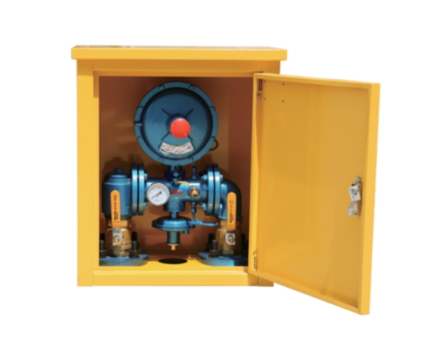
Dec . 05, 2024 04:27
Back to list
Understanding Gas Pressure Regulation with Reducing Valves for Efficient Performance
Understanding Gas Pressure Reducing Valves
Gas pressure reducing valves (PRVs) play a critical role in the management and control of gas pressure within various systems. Whether in residential settings, industrial applications, or commercial installations, these valves ensure that gas is delivered at a safe and consistent pressure. In this article, we will explore the function, importance, types, and operational principles of gas pressure reducing valves.
What is a Gas Pressure Reducing Valve?
A gas pressure reducing valve is a mechanical device used to reduce the high inlet pressure of a gas to a lower, more manageable outlet pressure. This is essential in applications where gas needs to be used safely and efficiently. Without PRVs, excessive pressure can lead to leaks, equipment failure, or catastrophic explosions. Hence, these valves are vital for safety and reliability in any gas-utilizing system.
Importance of Gas Pressure Reducing Valves
The primary importance of PRVs lies in their ability to regulate pressure. Here are several key reasons highlighting their importance
1. Safety By controlling the pressure of gas flowing through a system, PRVs help prevent accidents associated with high pressures, such as gas leaks or explosions.
2. Equipment Protection Many appliances and industrial equipment are designed to operate at specific pressures. A PRV ensures the pressure remains within these limits, prolonging the life of the equipment and decreasing maintenance costs.
3. Energy Efficiency By maintaining optimal pressure, these valves can help minimize energy consumption. Systems operating at the correct pressure are less likely to experience inefficiencies or waste.
4. Compliance Many regulations require the installation of PRVs in gas systems to comply with safety standards. Adherence to these regulations helps ensure consumer safety and legal compliance.
Types of Gas Pressure Reducing Valves
gas pressure reducing valve

There are various types of gas pressure reducing valves available, each suited for different applications and operating conditions
1. Single-Stage PRVs These valves reduce the pressure from the source to the desired level in one step. They are commonly used in residential applications where pressure reduction needs are relatively straightforward.
2. Two-Stage PRVs These valves manage pressure reduction in two distinct stages. They are often found in systems where the inlet pressure may fluctuate significantly, allowing for more precise control over outlet pressure.
3. Spring-Loaded PRVs These use a spring mechanism to regulate pressure. When the outlet pressure exceeds the set limit, the valve closes to reduce flow until the pressure falls back within acceptable limits.
4. Pilot-Operated PRVs These valves rely on a pilot system that monitors the outlet pressure and adjusts the main valve accordingly. They are particularly effective in applications requiring high flow rates and stable pressures.
How Gas Pressure Reducing Valves Work
The operation of a PRV is relatively straightforward. When gas flows into the valve, it encounters a diaphragm and spring mechanism that determines the outlet pressure. As the inlet pressure increases, it pushes against the diaphragm, which in turn compresses the spring. If the outlet pressure decreases, the spring expands, allowing more gas to flow through the valve until the preset outlet pressure is restored.
The design of the valve allows for robust performance and reliability. PRVs are usually made from durable materials resistant to corrosion and wear, ensuring they can withstand the harsh conditions often found in gas systems. Regular maintenance is recommended to ensure these valves continue to function correctly, including cleaning, inspecting for wear, and replacing seals as necessary.
Conclusion
Gas pressure reducing valves are crucial components in ensuring the safe and efficient use of gas in various applications. By maintaining consistent and safe gas pressures, these valves protect both people and equipment from the dangers associated with high gas pressures. Understanding their function, types, and operational principles can help users appreciate the importance of proper gas management in their systems. In an era where safety and effectiveness are paramount, investing in quality gas pressure reducing valves and their maintenance is essential for any gas-utilizing system.
Latest news
-
Safety Valve Spring-Loaded Design Overpressure ProtectionNewsJul.25,2025
-
Precision Voltage Regulator AC5 Accuracy Grade PerformanceNewsJul.25,2025
-
Natural Gas Pressure Regulating Skid Industrial Pipeline ApplicationsNewsJul.25,2025
-
Natural Gas Filter Stainless Steel Mesh Element DesignNewsJul.25,2025
-
Gas Pressure Regulator Valve Direct-Acting Spring-Loaded DesignNewsJul.25,2025
-
Decompression Equipment Multi-Stage Heat Exchange System DesignNewsJul.25,2025

